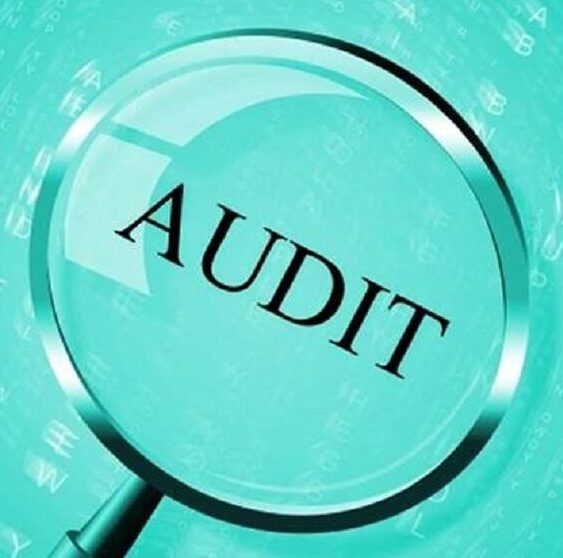
With the influx of funding issued to governmental and non-profit entities via COVID-19 funding programs such as the 2021 American Rescue Plan Act and 2020 CARES Act, your organization may be required to have a Single Audit performed for the first time in its history. This blog will provide key tips you should be following to ensure your organization complies with Single Audit requirements. And for those organizations who have been under Single Audit guidance previously, this blog will provide important reminders for your organization.
What is a Single Audit?
Federal awards can take many forms including: grants, contracts, cooperative agreements, loans, loan guarantees, property, interest subsidies, insurance, direct appropriations, endowments, other non-cash assistance, and indirect state or local government transfers of federal funds. Lastly, federal expenditures for single audit purposes may include lost revenue as allowed by certain federal programs.
If your organization expends $750,000 or more in federal funds during any fiscal year, it is required to have a Single Audit completed (or in some cases perhaps a program-specific audit). This requires additional internal control and compliance testing specifically for federal expenditures.
The Single Audit requirements, along with requirements for the expenditure of federal funds, are contained in 2 CFR 200, Uniform Guidance. The Uniform Guidance can be viewed here online.
When your auditor performs your Single Audit, they will perform a financial statement audit in accordance with American Institute of Certified Public Accountants (AICPA) standards known as Generally Accepted Auditing Standards (GAAS) and Government Auditing Standards (known as Yellow Book or GAGAS [Generally Accepted Government Auditing Standards]) along with a compliance audit in accordance with GAAS and the Uniform Guidance. The completed audit must be submitted to the Federal Electronic Clearinghouse within 30 days of receipt of the auditor’s reports or 9 months after the end of the audit period.
Below are key tips to follow to help your organization be in the best position possible to comply with an upcoming Single Audit:
Understand Your Federal Funding and Amounts Expended, Including any New Federal Funding
First, it will be important for your organization to understand the federal funding it expends in terms of program requirements and amounts. Typically, governments and non-profits receive their federal awards through federal programs. All federal awards are assigned a single number in the Assistance Listing, which can be found online here. When no Assistance Listing number is assigned, all federal awards to nonfederal entities from the same agency made for the same purpose must be combined and considered one program. In some cases, federal awards take the form of clusters. A cluster is defined as a grouping of closely related programs that share common compliance requirements. Clusters are treated as one program for the auditor’s major program determination and testing. Clusters include Research and Development, Student Financial Assistance, along with other clusters as defined in the Uniform Guidance. A federal grant is defined as expended when the expenditure or expense transactions occur or in the case if your organization is subrecipient, it’s defined when the disbursement is made to the subrecipient.
Understanding the Relevant Compliance Requirements Associated with your Federal Awards
What are the key responsibilities for auditees to follow under the Uniform Guidance? There are several:
- Recipients must comply with all award requirements.
- Recipients must have adequate performance measurement systems in place.
- Recipients must have adequate financial management systems in place, as well, including a means for separate identification of federal awards, a system to document complete and accurate financial results, a system of recordkeeping for support of federal drawdowns, and have processes in places for effective control and accountability.
- Recipients must have complete written procedures in place. Specifically written procedures are recommended for all compliance areas including Section 200.305 Payments (cash draws), 200.318 Procurement (more details on Procurement Standards are below), Allowability of Costs (Subpart E, Cost Principles), 200.430-431 Compensation (Personnel and Benefits), and 200.475 Travel Costs).
- Recipients must maintain adequate systems of internal controls (more details are below)
- Recipients must maintain adequate documentation and follow proper processes regarding payments (grants draws/advances), cost sharing/matching, program income, budget revisions requiring prior approval, property standards (ownership/inventory), and subrecipient monitoring/management.
Following The Required Procurement Standards
The Uniform Guidance requires federal funding recipients and sub-recipients (excluding state entities) to follow certain procurement standards as detailed in Sections 200.318 through 200.327. Key components of these procurement standards are that entities use documented procurement procedures, have no conflicts of interest, and that the most economical purchase options are considered. Below are the thresholds for purchasing requirements as outlined in the Uniform Guidance:
- Micro Purchases (purchases less than $10,000)
-No requirement for soliciting competitive pricing, as long as you consider the price reasonable based on research, experience, purchase history or other information.
-You can adjust the $10,000 limit to up to an amount as high as $50,000.
2. Small Purchases (purchases between $10,000 and $250,000)
-Higher than the micro-purchases threshold, but does not exceed the Simplified Acquisition Threshold (SAT) of $250,000
-Price or rate quotations must be obtained from an adequate number of qualified sources as determined appropriate by your entity.
3. Formal Procurement (greater than $250,000, previously was $150,000)
-Requires sealed bids or requests for proposals.
Our blog entitled, Update to Procurement Rules for Federal Funds, provides additional information on these standards.
Maintaining Adequate Systems of Internal Control
Your internal controls should be in compliance with either the “Standards for Internal Control in the Federal Government” (the ‘Green Book’) and the “Internal Control Integrated Framework” issued by the Committee of Sponsoring Organization of the Treadway Commission (COSO).
We recommend that you review the questionnaire below to take an honest look at your organization’s level of internal controls and to identify areas that need addressed. Note the areas listed below are not intended to be used as a ‘be all/end-all checklist’ of required characteristics as depending on the size/structure of your organization and the philosophy of your management you may have different apparatuses in place that meet your particular needs. Smaller entities typically lack the capacity to have all of the areas listed below implemented. However, with foresight, even smaller organizations can develop systems and processes that meet effective standards for internal control.
Listed below is a summary of Green Book and COSO Components and Principles of Internal Control:
Control Environment
- Demonstrate commitment to integrity and ethical values.
- Exercise oversight responsibility
- Establish structure, responsibility and authority
- Demonstrate commitment to competence
- Enforce accountability
Risk Assessment
- Define objectives and risk tolerances
- Identify, analyze, and respond to risks
- Assess fraud risk
- Identify, analyze, and respond to change
Control Activities
- Design control activities
- Design activities for the information system
- Implement control activities
Information and Communication
- Use quality information
- Communicate internally
- Communicate externally
Monitoring
- Perform monitoring activities
- Evaluate issues and remediate deficiencies
More information regarding maintaining proper systems of internal control can be found on our blog entitled, Got Federal Awards?
Understanding Sub-Part E Cost Principles and Allowable Costs
The key premise entities must follow regarding Sub-Part E Cost Principles is that when applying cost principles it “should require no significant changes to sound internal accounting policies/procedures.” The “total cost” of a federal award is defined as the sum of the allowable direct and allocable indirect costs less any applicable credits.
With respect to allowable costs, the following are key areas auditees should keep in mind:
- They should be necessary and reasonable for the performance of the federal award.
- They should conform to any limitations or exclusions set forth in these principles.
- They should be consistent with policies and procedures that apply uniformly to both federally financed and other activities of the nonfederal entity.
- They should be accorded consistent treatment (direct vs. indirect).
- They should be determined in accordance with Generally Accepted Accounting Principles.
- They are not included as a cost or used to meet cost sharing or matching requirements of any other federally financed program
- They should be adequately documented.
For indirect costs, the types of rates used by auditees are negotiated rate and the de minimis rate of 10% of modified total direct costs. Refer to Subpart E of the Uniform Guidance for further requirements.
Compensation Requirements
Organizations should maintain records showing reasonableness of compensation along with the assignment and allocation to federal awards. Time and distribution records must be maintained for all employees whose salary is paid in whole or in part with federal funds and/or used to meet a match/cost share requirement. Documentation of compensation should not be based on budget estimates alone – it needs to be actual. There should be full disclosure regarding all time worked for the organization and what percentage of that time is compensated through federal funds.
Other Auditee Responsibilities
- Auditees are responsible for several other areas to be in compliance as well including the following:
- Arrange for the Single Audit to be performed by an independent auditor and ensure it is properly performed and submitted timely.
- Prepare the corrective action plan (if there are findings). A corrective action plan, in a separate document from the auditor’s findings, must address each audit finding included in the current year auditor’s reports. This document is required to be on client letterhead.
- Comply with federal statutes, regulations, and the terms and conditions of federal awards.
- Evaluate and monitor compliance with statutes, regulations, and the terms and conditions of federal awards.
- Take prompt action when noncompliance is identified.
- Safeguard protected personally identifiable information.
Factors When Selecting Your Independent Auditor
The AICPA’s Governmental Audit Quality Center (GAQC) recommends an organization take into consideration the following factors when selecting an auditor:
- Demonstration of qualifications
- Availability of staff with appropriate technical abilities
- Extent of the auditor’s experience with organizations like yours
- Results of their external peer review
- Participation in quality improvement programs like the GAQC
Quick Tips to Simplify the Single Audit Process
A best practice for any audit, particularly a Single Audit, is to plan ahead. Ideally, you should be meeting with your audit firm before the fiscal year end. Meeting early will help you to identify and address any problem areas in advance while providing the benefit of communicating with your auditor in the early stages of the process. This will help to address any potential issues proactively. Prior to the audit, your organization should have readily accessible written policies and procedures, and you should be prepared to provide the audit firm access to personnel, accounts, books, records, supporting documentation, and other information as needed.
Whether it’s the first time for your organization to perform a Single Audit, or if your organization has years of experience in this area, we are available to address any questions you may have.


